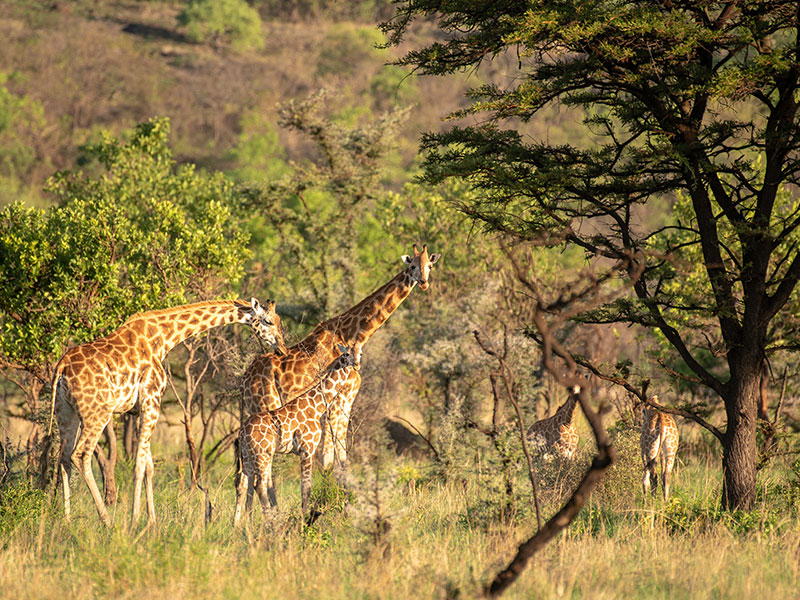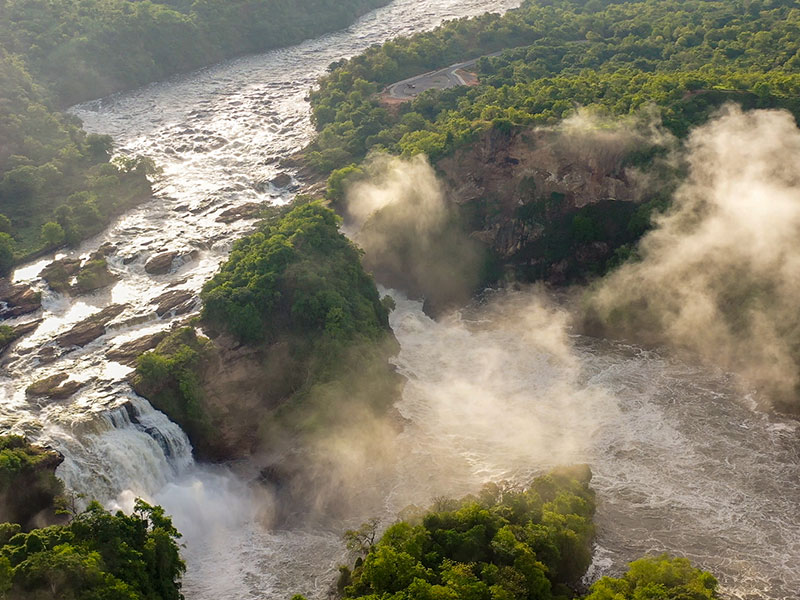
Chimpanzee trekking is one of the most thrilling and educational wildlife activities available in Africa, particularly in Uganda’s Kibale National Park. Known for its diverse primate population, Kibale offers the rare opportunity to observe our closest relatives in their natural habitat. This activity, rooted in both conservation and education, attracts thousands of tourists each year, eager to learn more about chimpanzees and contribute to their protection.
Chimpanzee trekking in Uganda began as part of a larger conservation and eco-tourism initiative aimed at protecting primate species and generating income for local communities. Kibale National Park, established in 1993, quickly became a hotspot for primate research and tourism. The Uganda Wildlife Authority (UWA) worked with international conservation organizations to habituate several chimpanzee groups, allowing tourists to observe them closely without disrupting their natural behavior.
The park has since become one of Africa’s premier locations for primate trekking, with several chimpanzee groups designated for daily visits. The revenue generated from trekking permits has not only helped fund conservation efforts but has also provided economic benefits to surrounding communities, promoting the sustainable coexistence of humans and wildlife.
Kibale National Park offers chimpanzee trekking year-round, but the best time to visit is during the dry seasons, from December to February and June to September. During these periods, the forest trails are more navigable, and wildlife is easier to spot as animals tend to gather around water sources. The wet seasons, from March to May and October to November, bring heavier rains, making trekking more challenging but still rewarding for those seeking a more adventurous experience. Regardless of the season, sightings are highly likely. Kibale boasts a 90% success rate for chimpanzee sightings during treks due to the large population of chimps and the expertise of local guides.
Chimpanzees live in large, complex social groups called “communities,” which can range from 20 to over 150 individuals. Unlike other primates that form cohesive groups, chimpanzees are more fluid in their social interactions. They exhibit what is known as a fission-fusion society, where the size and composition of the group change frequently throughout the day based on food availability, social interactions, and mating opportunities.
Within a chimpanzee community, there is a strict dominance hierarchy, particularly among the males. The alpha male, often the strongest and most socially adept, holds the highest rank and has privileged access to food and mating partners. Females also have their own hierarchy, although it is less rigid than that of males. Chimpanzees are highly intelligent and social animals, using a wide range of vocalizations, facial expressions, and gestures to communicate with one another. They have been observed using tools, such as sticks to extract termites or stones to crack nuts, showcasing their advanced cognitive abilities.
The Reproductive System of Chimpanzees
Chimpanzees have a unique reproductive system that is characterized by a multi-male, multi-female mating structure. Females typically reach sexual maturity between the ages of 8 and 12, while males mature slightly later, between 9 and 15 years of age. Once a female becomes sexually mature, she goes through an estrous cycle that lasts about 35 days, with the most fertile period marked by a noticeable swelling of her genital area. During this time, a female may mate with multiple males, which increases genetic diversity within the community and reduces the likelihood of infanticide, as males are less likely to harm offspring that could potentially be their own. Gestation lasts about 230 days (approximately 7.5 months), after which a single infant is born. Twins are rare but do occur occasionally.
Chimpanzee mothers are highly protective and nurturing, carrying their infants on their bodies for the first six months and maintaining a close bond for several years. Weaning typically occurs between 3 to 5 years, although the mother-infant relationship remains strong even after the infant becomes independent.
The Value of Chimpanzee Trekking in Kibale National Park
Chimpanzee trekking in Kibale National Park offers immense value to both tourists and conservationists. For visitors, the opportunity to observe chimpanzees in their natural habitat is a deeply rewarding and educational experience. It allows people to connect with nature, gain a greater understanding of primate behavior, and witness the intricate social dynamics of chimpanzee communities.
From a conservation perspective, chimpanzee trekking plays a crucial role in protecting the species and its habitat. The funds generated from trekking permits are reinvested into conservation initiatives, including anti-poaching efforts, habitat restoration, and research programs. Furthermore, the presence of tourists in the park helps deter illegal activities, as poachers and loggers are less likely to operate in areas frequented by visitors.
In addition to conservation, chimpanzee trekking provides significant economic benefits to the local communities surrounding Kibale National Park. Jobs are created for guides, trackers, and park staff, and local businesses benefit from the influx of tourists. This helps to foster positive relationships between the park and its neighbors, ensuring that both wildlife and people can thrive.
Conservation Challenges and Efforts
Despite the success of chimpanzee trekking in Kibale National Park, chimpanzees face numerous threats to their survival. Habitat destruction, primarily due to agricultural expansion, logging, and human settlement, continues to reduce the forest areas that chimpanzees depend on. Additionally, poaching remains a problem, with chimps sometimes hunted for bush meat or captured for the illegal pet trade.
To combat these challenges, Kibale National Park has implemented several conservation strategies, including habitat restoration projects, anti-poaching patrols, and community outreach programs. Researchers working in the park also play a vital role in studying chimpanzee behavior, health, and genetics, providing valuable data that informs conservation efforts.
If you’re planning a chimpanzee trekking expedition in Kibale National Park, here are some key details to keep in mind:
Trekking Permits: A permit is required to trek chimpanzees in Kibale. The cost of a permit varies depending on nationality but is typically around USD $200 per person for foreign tourists.
Group Size: Trekking groups are limited to a maximum of eight people to minimize disturbance to the chimpanzees.
Duration: Treks usually last between 2 to 4 hours, depending on the location of the chimpanzees and the terrain.
What to Bring: It is recommended to wear sturdy hiking boots, long pants, and a long-sleeved shirt to protect against insects. A rain jacket, hat, and insect repellent are also advisable. Don’t forget your camera for capturing the unforgettable moments!
Guides: Experienced guides and trackers lead the treks. They are highly knowledgeable about the chimpanzees and their environment and play an essential role in locating the chimps and ensuring that the encounter is safe for both visitors and the animals.
Chimpanzee trekking in Kibale National Park offers a unique and life-changing experience for nature lovers, wildlife enthusiasts, and anyone interested in primate conservation. Not only does it provide the chance to witness the incredible intelligence and social behavior of chimpanzees up close, but it also supports vital conservation efforts that protect these remarkable animals for future generations.
By understanding the historical context, reproductive biology, and social dynamics of chimpanzees, as well as the economic and conservation value of trekking, visitors can appreciate the importance of preserving both the species and the ecosystems they inhabit. With proper planning, responsible tourism, and continued conservation efforts, Kibale National Park will remain a sanctuary for chimpanzees and a haven for wildlife enthusiasts for years to come. If you’re planning to have your next adventure in Uganda for chimpanzee trekking book with us AfriGaze Uganda Safariz for the unforgettable travel experience.











